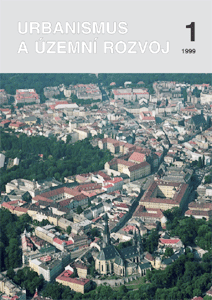
Parallel Public Participation: an Answer to Inertia in Decision−making, by Tim Richardson & Jiří Dusik & Pavla Jindrová
In the countries of Central and Eastern Europe (CEE) public participation is a relatively new phenomenon which is being introduced to traditionally closed planning processes. In the face of inertia against the democratisation of decision-making, non-governmental organisations (NGOs) are beginning to play a critical double role in both advocating the need for reform and in proactively establishing new practices in public participation. This paper examines two case studies of EIA processes in the Czech Republic where, in response to this inertia, NGOs organised parallel public participation (PPP) programmes alongside the formal EIA of proposals for a major tourism development at Rajchéřov in South Bohemia and for an urban road development in Přerov in Northern Moravia. The paper concludes that PPP can have a significant impact on EIA, and that it provides models of best practice which will help in the future development of public participation in Central and Eastern Europe.
Development Programmes, Strategic Plans, and Other Development Documents of Czech Municipalities, by Alena Navrátilová & Josef Markvart
The article sums up the results of an analysis of strategic plans and development programmes of 13 towns and cities and two micro regions. The analysis has been carried out in view of the completeness of the documentation, its validity schedule, its relation to other planning documents, and the tools to advocate its objectives. In Czech Republic, no particular methods of strategic plans and development programmes has been determined, and so both the contents and the form of the documents vary considerably.
Methodics of Incorporating the Spatial Systems of Environmental Stability (SSES) in Master Plans, by Ludmila Kašparová
At the end of 1998, the Institute for Spatial Development, in collaboration with the Physical Planning Department of the Ministry of Regional Development, published two methodical texts: Methodics of Incorporating the Spatial Systems of Environmental Stability (SSES) in Master Plans and How to Use Technical Plans of Regional and Superregional SSES's. Both of them deal with spatial systems of environmental stability as an element of physical planning. The creation of spatial systems of environmental stability, comprising the current substantial segments of the country, contributes largely to meeting the world-wide Convention of Biological Variety, which was joined by the Czech Republic in 1994.
Papers of the European Spatial Development Perspective Conference
The last issue of URBAN PLANNING AND SPATIAL DEVELOPMENT brought a brief report on a conference on physical planning cooperation, concerning the expansion of the EU, held last November in the Ferstel palace in Vienna. The conference was part of a one-year-project called European Spatial Development Perspective. As the topic of the conference is tightly connected with the future Czech membership in the EU, here are six key papers of the conference, translated and adapted for the press. The editors acknowledge the writers' consent to publication.
Luštěnice − Zelená; 2nd Draft of the Master Plan, by Karel Hocke
The original assignor of the physical planning documentation, the Czech Ministry of Economy, placed the order at Terplan, a.s., in 1994. The job was started with surveys and analyses, then as the Master Plan of the Luštěnice Settlement Unit. It was requested for the documentation to be compatible with the agenda of Privum, the institution dealing with the privatization process of the former Milovice-Mladá military area. The article describes the elaboration of the settlement's physical planning documentation.
Public Transport Policy and Physical Planning, by Jiří Růžička
Since 1989, the private sector expansion and the decline of the public transport, especially in highly urbanised areas, has been the cause for an increasing use of cars. The consequence is a higher average traffic intensity in the streets and more balanced intensities during the day, as opposed to the rush hours in the past. This brings more demand for parking sites. A subsequent problem is a higher demand for parking places in housing areas. They were constructed without any roofed parking lots, and the growing numbers of cars make the current sites insufficient.